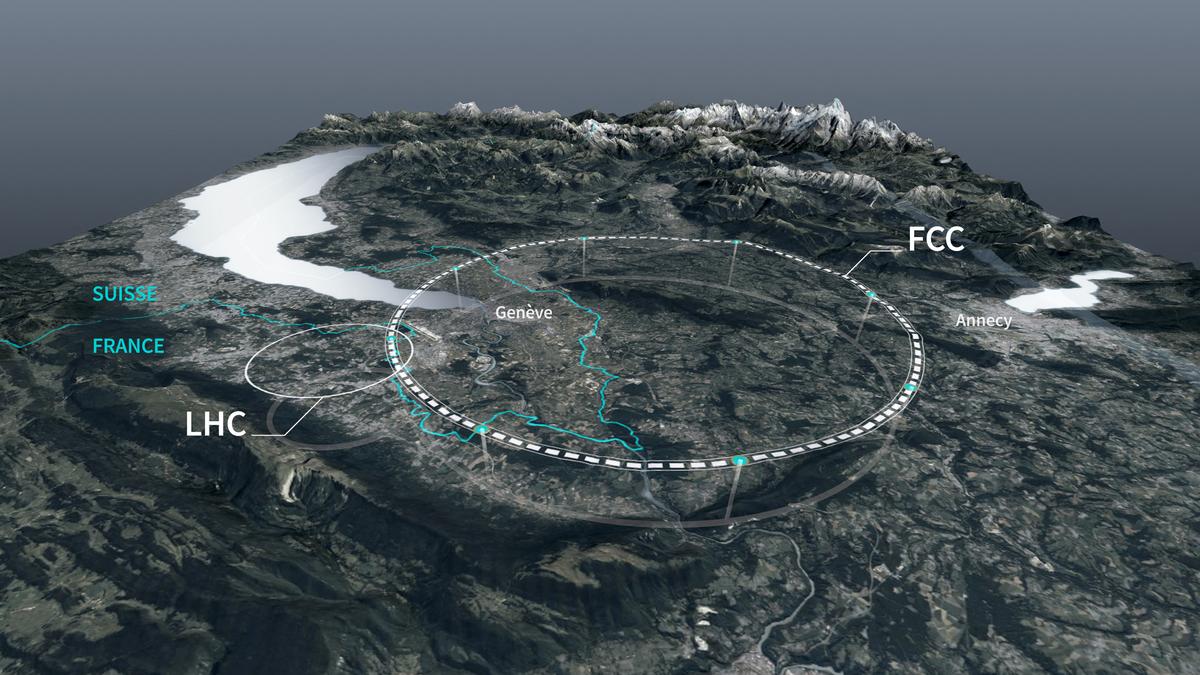
Scientists release plans for an even bigger atom smasher to address the mysteries of physics
The Hindu
Plans for the Future Circular Collider at CERN promise groundbreaking physics research with a potential $16 billion price tag.
Top minds at the world’s largest atom smasher have released a blueprint for a much bigger successor that could vastly improve research into the remaining enigmas of physics.
The plans for the Future Circular Collider – a nearly 91 km (56.5-mile) loop along the French-Swiss border and below Lake Geneva – published late Monday (March 31, 2025) put the finishing details on a project roughly a decade in the making at CERN, the European Organization for Nuclear Research.
The FCC would carry out high-precision experiments in the mid-2040s to study “known physics” in greater detail, then enter a second phase – planned for 2070 – that would conduct high-energy collisions of protons and heavy ions that would “open the door to the unknown,” said Giorgio Chiarelli, a research director at Italy’s National Institute of Nuclear Physics.
“History of physics tells that when there is more data, the human ingenuity is able to extract more information than originally expected,” Mr. Chiarelli, who was not involved in the plans, said in an e-mail.
For roughly a decade, top minds at CERN have been making plans for a successor to the Large Hadron Collider, a network of magnets that accelerate particles through a 27 km (17-mile) underground tunnel and slam them together at velocities approaching the speed of light.
The blueprint lays out the proposed path, environmental impact, scientific ambitions and project cost. Independent experts will take a look before CERN’s two dozen member countries – all European except for Israel – decide in 2028 whether to go forward, starting in the mid-2040s at a cost of some 14 billion Swiss francs (about $16 billion).
CERN officials tout the promise of scientific discoveries that could drive innovation in fields like cryogenics, superconducting magnets and vacuum technologies that could benefit humankind.

Half a century has passed since India successfully launched Aryabhata, its first satellite, on April 19, 1975. This success proved to be the solid foundation for India’s space programme, which has grown by leaps and bounds in the five decades since. A.S.Ganesh takes you back to where it all started…

 Run 3 Space | Play Space Running Game
Run 3 Space | Play Space Running Game Traffic Jam 3D | Online Racing Game
Traffic Jam 3D | Online Racing Game Duck Hunt | Play Old Classic Game
Duck Hunt | Play Old Classic Game










